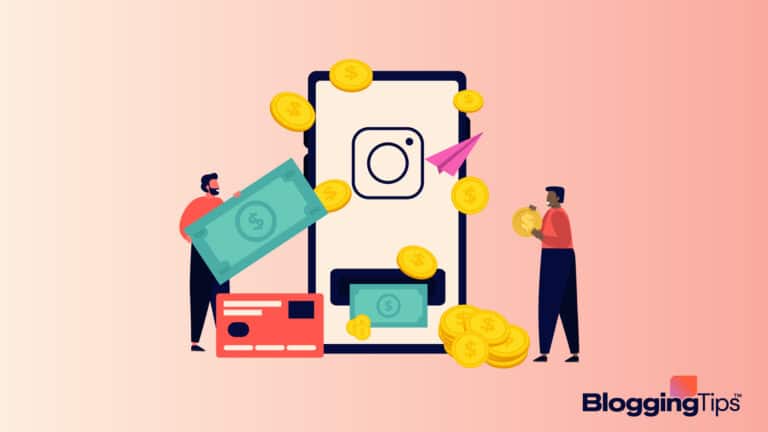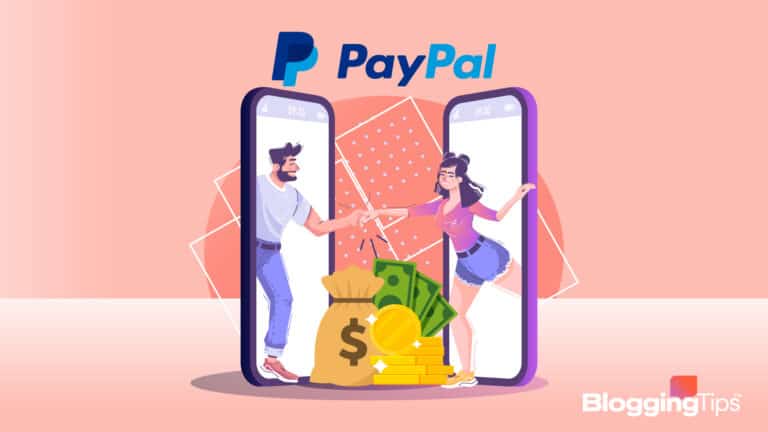Are you struggling with how to start a clothing store online?
Are you overwhelmed with the information out there?
Fret not, there are many people with clothing store ideas that don’t know how to take their idea online.
Fortunately, the process is not as tedious as most people think.
This tutorial details the step-by-step process you’ll need to set up an online clothing store in the shortest time.
Frequently Asked Questions
Some common questions from people looking to set up an online clothing store include:
How Much Does it Cost to Start an Online Clothing Store?
The short answer is that it depends.
A store designing and making custom dresses would have a higher initial capital and running cost than another store doing dropshipping.
Some cost are, however, constant, like domain name and hosting or ecommerce platform subscription costs.
Are Online Clothing Stores Profitable?
Yes, they are.
That said, everything depends on how much work you’re willing to put in and the marketing and administrative strategies in place.
According to Forbes, the average online clothing store owner in the United States makes shy of $50,000 per year.
What You’ll Need to Start a Clothing Store Online
Some of the tools or apps you’ll need to follow the steps in this post include:
- Ecommerce store builder: These platforms make it easy to set up an online store without any design or coding experience.
- Product Photos: You’ll need crisp, clean, and clear pictures of the clothes you intend to sell.
- Product descriptions: You’ll need unique descriptions for each product.
- Domain name: You’ll need to buy a domain name that matches your brand name.
Step-by-Step Instructions on How to Start a Clothing Store Online
STEP 1: Choose a Niche and Define Your Target Audience
Choose a Clothing Niche
Do you see an opportunity in the athleisure scene, or do you want to sell evening dresses or vintage clothing?
The clothing niche you decide on should be one in which you have adequate knowledge or enjoy making.
Why?
So you can answer customer questions, recognize quality designs, and make recommendations on designs and combinations.
Whichever niche you choose, make sure it’s one with earning potential.
You can gauge consumer interest by entering the niche into Google Trends.
The image below shows the global search trend for athleisure in the past 12 months.
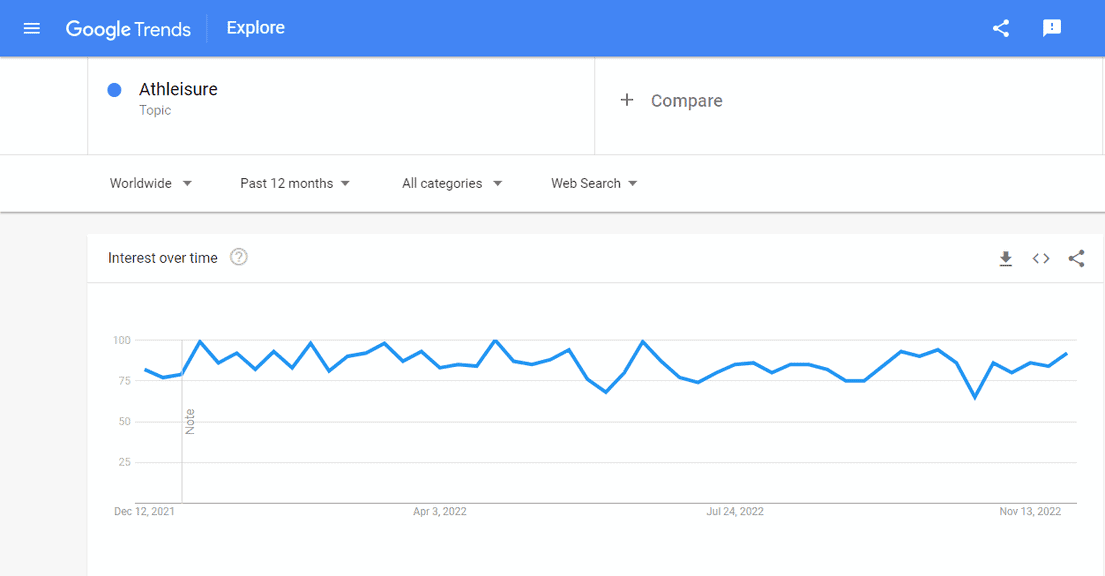
And this is the search trend for bikinis:
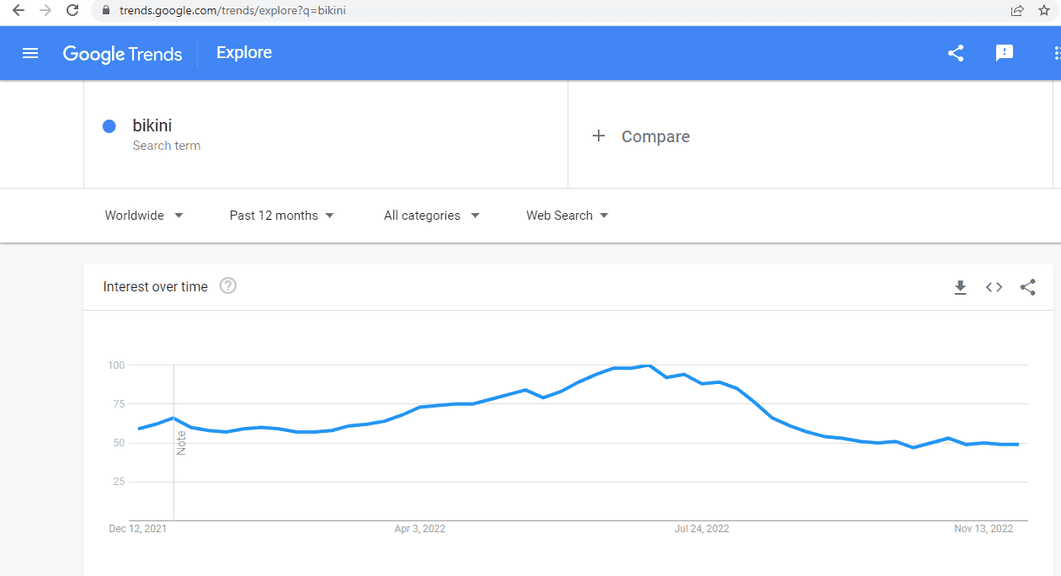
You may want to avoid a niche with seasonal interest (peaks between May and August), as shown in the image above. The exception is if you’re selling other items as well.
While it may be tempting to sell multiple items, from our experience, it makes sense to be known for a particular niche or a few items. You want your customers to think of your store when they need anything related to that niche.
Define Your Target Audience
Are you selling clothes online for women, men, or children?
Knowing your target audience will help you streamline your marketing and how you communicate on all your channels.
You can determine your target audience by looking at a popular competitor selling clothes similar to what you intend to sell.
You can then use Similarweb to see who visits their website.
For example, the image below shows the age and gender distribution of Shein’s web visitors.
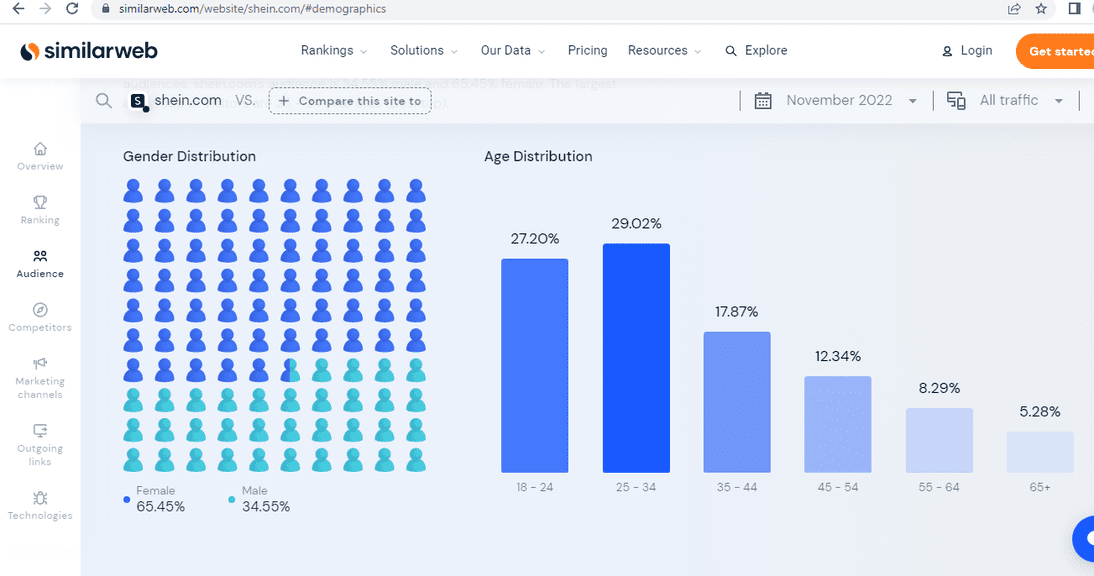
STEP 2: Product Sourcing
Now that you know what you’ll be selling and to who, the next question is: how will you source the products?
Well, there are three main business models available to you:
- Make your products
- Partner with clothing manufacturers, aka private label clothing
- Dropshipping
Make Your Clothing Products
There are two approaches to this.
The first approach is to buy the fabrics, materials, and accessories and sew them together to make the clothing pieces.
In the second approach, you buy blank apparel like hoodies and t-shirts and print graphic designs on them.
This process is otherwise known as print-on-demand. You could equally allow customers to select their preferred designs.
One thing to be wary of with this option is knowing what materials to keep in stock.
If you sew dresses down or print on t-shirts in the hope of a purchase, you’re increasing the risk of being left with dead stock.
Partner with Suppliers or Private Label Clothing
In this approach, you outsource all production to an established clothing manufacturer.
You can design the products yourself or collaborate with the manufacturer till you have a quality product.
These products will carry your brand name as if you made them.
The tricky thing about this approach is finding the right supplier that is reliable and quality conscious.
Some of the popular places to find established clothing manufacturers, wholesalers, and suppliers include Alibaba, Oberlo, and DHgate.
Some of the factors you should consider, include:
- Ratings and reputation: How many orders have they completed? What’s their rating out of five? Ensure you read the reviews to hear what past customers have said about the product and the manufacturer.
- Price: Do they offer progressive discounts the more you order?
- Delivery time: How long do they take to deliver products?
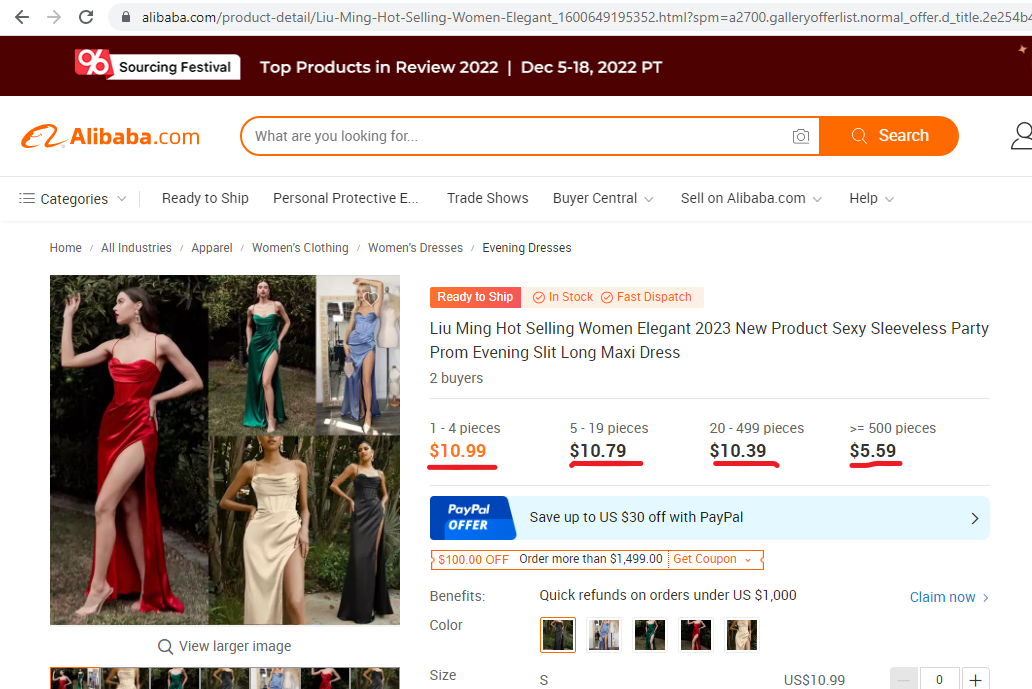
Dropshipping
With dropshipping, you are not involved in the design, production, or shipping of products.
You are effectively a middleman between the manufacturer and the potential customer.
When the customer makes an order on your online store, you then make an order on the manufacturer’s page.
The manufacturer then ships the product to the customer.
Of the three options, this is the least capital-intensive and requires less day-to-day management than the other options.
The downside is that other stores may be selling similar products to what you stock.
Examples of places to find dropshipping suppliers include Spocket, AliExpress, and SaleHoo.
STEP 3: Choose a Brand Name
Your online store needs a solid brand behind it to set it apart from your competitors.
Your brand and how you position it sells the product.
This process starts with a unique and creative brand name.
Some of the considerations when choosing a brand name include to:
- Make it short, creative and fun. It should easily roll off the tongue, preferably two syllables or three at a stretch.
- Ensure it is available as a social media (SM) handle on SM platforms such as Instagram, Facebook, Twitter, and TikTok.
- Ensure it is also available as a domain name.
After you’ve confirmed the above, you should register with your local authority.
You can register your business as a sole proprietorship if you own it 100% or an LLC if you have partners.
STEP 4: Build Your Online Store
When people think of online stores, their first instinct is to create a website where they can sell.
The reality is that you can sell solely on social media too.
It all depends on your goals and what you think you can manage.
Selling solely on social media at first is one way to validate your business idea.
With that understanding, there are two primary options if you want to build a website store, including:
- Use a website builder like Shopify, BigCommerce, Wix, and Squarespace.
- Build your website on WordPress with WooCommerce or Magento plugins for ecommerce websites.
Using a website builder is much more straightforward, and that’s what we’ll talk about.
Using an Online Builder to Create a Clothing Store
Online store builders come with the full package of features you need to get your clothing store started in time.
This includes features like website security, payment gateways, and SSL certificates.
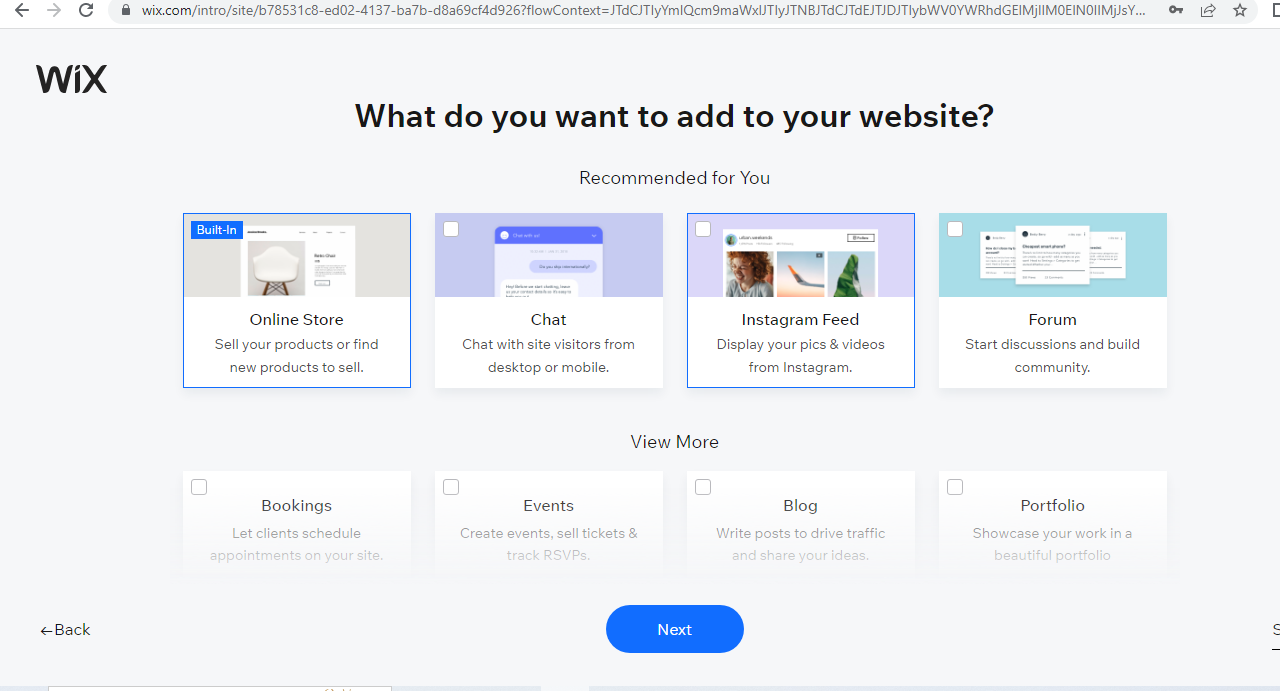
Some of the things you want to consider when choosing an online store builder are:
- The features that are important to you.
- Pricing and your budget.
- The size of your store and stock list. Wix and Squarespace are adequate for small stores, while Shopify and BigCommerce work for bigger stores with a broad range of stock lists.
The table below summarizes the difference between the four top-rated Ecommerce platforms referenced above.
Difference Between Different Ecommerce Online Clothing Store Builders
| Store Builder | Starting Price | Features | Payment Gateways | Transaction Fees |
| Wix | Starts at $17; 14-day free trial | Built-in SEO tools, gift cards, Facebook and Instagram Ads, analytics, mobile store management, unlimited bandwidth, 50 GB storage max, free SSL certificate, abandoned cart recovery, inventory management, up to 50K products, refunds management, customer loyalty & engagement, and more. | 50+ including Stripe, PayPal, Square, and more. | None |
| BigCommerce | Starts at $29.95; 15-day free trial | Abandoned cart recovery, unlimited bandwidth, unlimited storage space, unlimited number of products (on cheapest plan), integration with other apps, multiple languages and currency, refunds, and return, and more. | 36, including Paypal, Pinwheel Pay, BitPay, Alipay, Apple Pay, Square, Stripe, Klarna | None |
| Squarespace | Starts at $23; 14-day free trial | Abandoned cart recovery, unlimited bandwidth, unlimited storage space, unlimited number of products (on cheapest plan), integration with other apps, related products, inventory management, sync with Facebook and Instagram, sales analytics, multiple languages and currency, mobile store management, and more. | Square, Stripe, and Paypal | 0% – 3% depending on the plan. |
| Shopify | Starts at $24; 3-day free trial | Abandoned cart recovery, gift cards, unlimited products, free SSL certificate, reports, customer segmentation, marketing automations based on customer actions, language translation and currency conversion, local payment method (as available), and more. | 100+, including Alipay, Affirm, Skrill, Paypal, Klarna, etc. | 0.5% – 2% depending on the plan. |
STEP 4: Design Your Store
Most clothing store website builders have templates you can use.
They also have drag-and-drop features to remove elements you don’t want or like.
Ensure your design choices are not overwhelming and the color palette is inviting and consistent.
Prioritize the users’ experience over your personal preferences.
Think of how fast the page should load and how easy it should be for customers to find what they’re looking for.
Also, use this step to update other important details such as payment processors, shipping and shipping policies, store policies, refund and return processes, the about us page, and the contact page.
Lastly, ensure you spend time writing great meta descriptions and page titles with the right keywords.
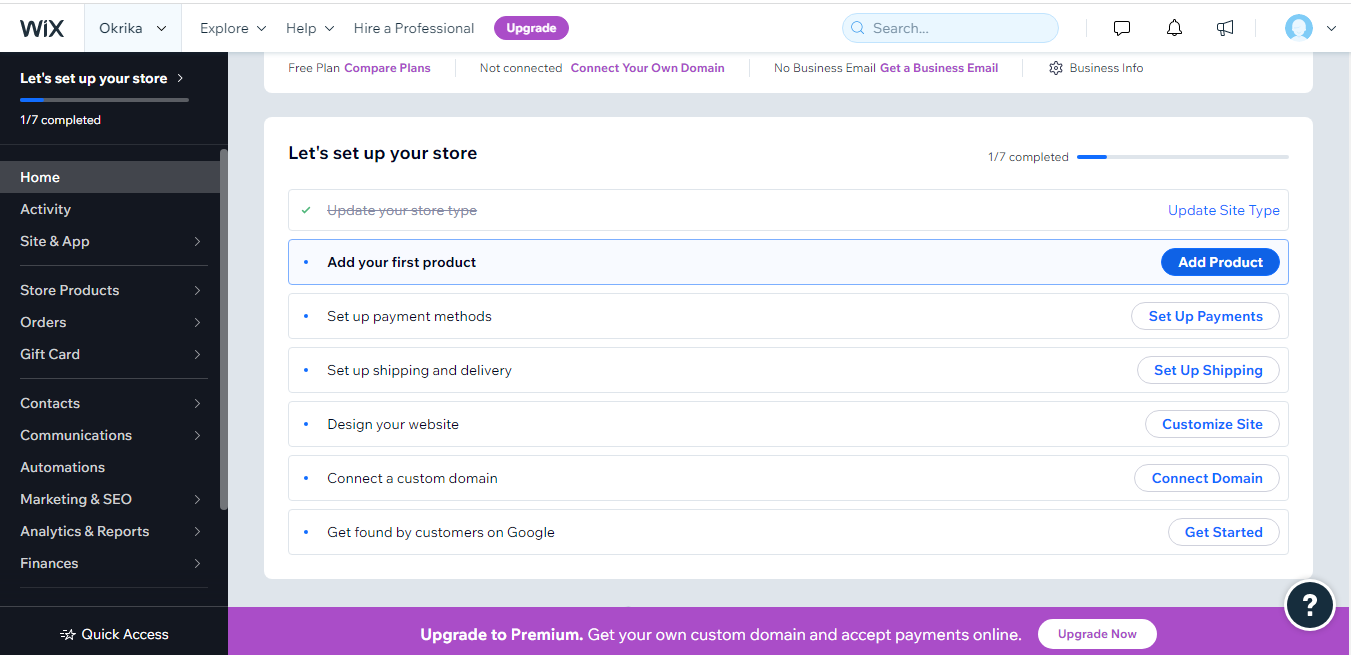
STEP 5: Add Products
There are three things to be wary of when adding items to your store, they are:
- Use clear pictures, preferably with white background. See to it that the images are lightweight to improve the store’s loading speed.
- Write clear, concise, and SEO-friendly product descriptions with the right keyword(s) for each product. Avoid keyword spamming.
- Don’t overwhelm your customers’ senses with many products per page.
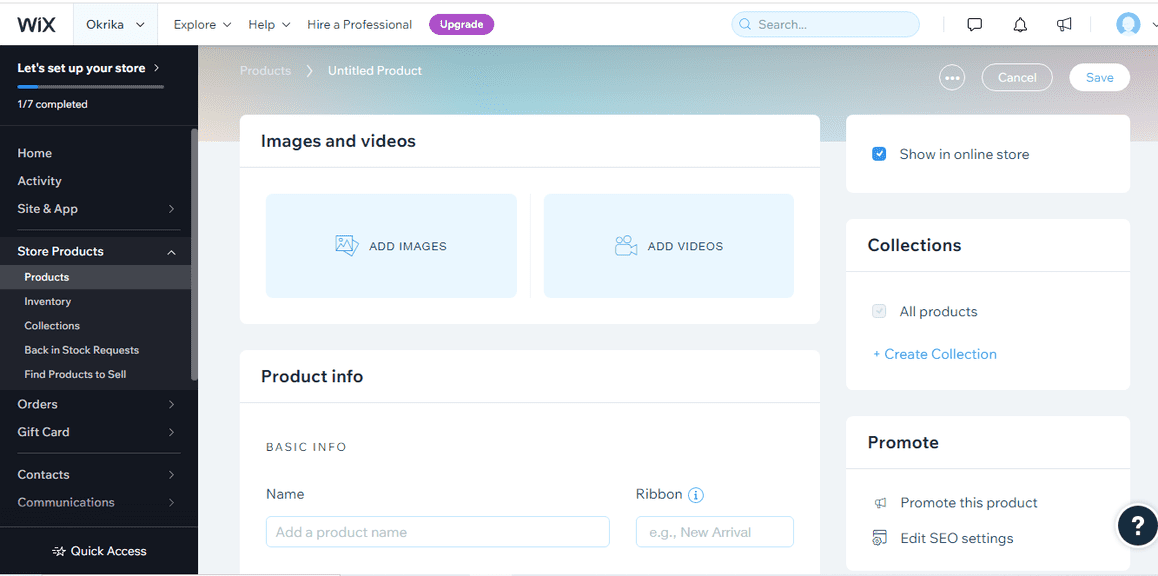
After setting up your store, test it before doing any marketing.
This test can be as simple as asking your friends and family to buy from the store and document their thoughts as they do.
STEP 6: Market Your Clothing Store
In terms of marketing strategy, here’s your checklist:
- Create branded social media handles (Instagram, TikTok, and Facebook) and create a content calendar for the same. Ensure your online store address is in all your bios and vice versa.
- Inform all the people in your network and tell them to tell a friend.
- Add a blog to your online clothing store for content and SEO purposes. Set a calendar to publish articles regularly. Whether it’s once a week or more, ensure you’re consistent.
- Add a way to collect emails from your customers and those who read your blog for email marketing. You can send occasional emails when you’re running sales or other promotions. Email collection is also important so you can send cart abandonment emails.
- Add a way for customers to review your clothing store. Reviews add social proof to your online store and make your brand credible.
- Run regular advertising. In the initial test, you may have to run ads across multiple platforms (YouTube pay-per-click, Facebook ads, & IG, TikTok, and Google ads) to see what works for your brand or product(s). For each campaign, always run with a small budget first. If the results are great, you can then increase the budget. Otherwise, you’ll need to tweak the ad and go again.
- Encourage and incentivize referrals from your customers.
For your marketing efforts, always ensure your point of reference is your target audience.
STEP 7: Ongoing Logistics
After creating your online clothing store, you need to keep tabs on things like inventory management, the ordering process, pricing, and profit margins.
Online store builders will make some of these tasks easy, but must track them regularly.
For example, you must constantly check where users are falling off while browsing your store.
If there are many users abandoning their cart, you need to investigate the underlying cause.
Could it be a high shipping cost?
These are some of the day-to-day challenges you’ll need to find solutions to.
How to Start a Clothing Store Online: Similar Tutorials Types to Check Out
These tutorials could also be of help if you’re looking for alternatives to websites to sell stuff:
- How To Start An Online Boutique: Want to start an online boutique and don’t know where to start? Learn how you can start one with this A-Z guide.
- How to Start an Ecommerce Business: Starting an ecommerce business is one of the ways to make money online. This guide explains how you can also start making money with ecommerce.
- How to Make Printables to Sell: Do you know you can make passive income with printables if you’re a creative graphics designer? This guide explains how.
How to Start a Clothing Store Online: Summary
That is a lot of information to cover, but you’ve got this.
As you can see, the steps you need to start your online clothing business are straightforward and not as technical as you thought.
Good luck, we are rooting for you.
We know you may still have questions, so please don’t hesitate to post your questions in the comment section below.
We’d love to help you out.


